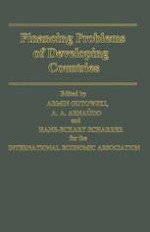1985 | Book
Financing Problems of Developing Countries
Proceedings of a Conference held by the International Economic Association in Buenos Aires, Argentina
Editors: Armin Gutowski, A. A. Arnaúdo, Hans-Eckart Scharrer
Publisher: Palgrave Macmillan UK
Book Series : International Economic Association Series
Included in: Professional Book Archive
